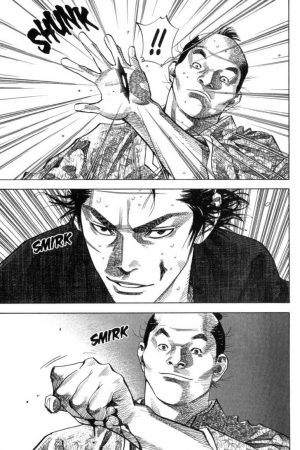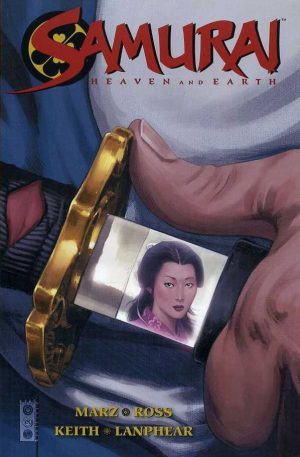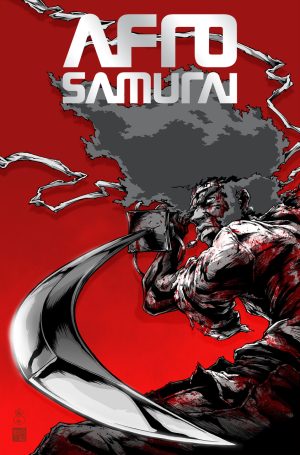Review by Karl Verhoven
Takehiko Inoue toyed masterfully with the desires of readers as he ensured would-be samurai Miyamoto Musashi and Otsū, the woman he loves, were in the same town, yet moved around each other never meeting. The way they met the same people at different times during Vagabond Vol. 9 was structured with the efficiency of a stage play.
Musashi wants to challenge himself against the master of the respected Yagyū organisation, but readers are aware the master is now old and ill, being cared for by Otsū. This section opens with Musashi having found a reason to provoke the school’s swordsmen into combat, hoping he’ll win and therefore have a clear route to their master. He hadn’t counted on having to face four more experienced swordsmen simultaneously. “I defeat their strongest, then the others start to show fear”, muses Musashi, “The group loses composure, eventually to come undone”. Does it play out to plan?
This is very much an action volume, with Inoue choreographing the swordfights cinematically, full of meaningful looks followed by brief bouts of action as the locations change. The personalities are well defined, and it’s now obvious that whenever possible Inoue’s setting is going to be outside somewhere in a forest. This time, conditions are more precarious because it’s at night. The movement and danger are contrasted by the beautifully drawn surroundings and the comparative serenity of Otsū playing the flute elsewhere, oblivious to what’s going on.
Inoue doesn’t avoid her meeting Musashi for a second volume, but the circumstances are hardly ideal, and what develops feeds into Vol. 11.
It’s all very engaging, but there’s a feeling Inoue is stumbling into repetition after ten volumes. He is using Eiji Yoshikawa’s Mushashi as a guide, so perhaps it’s limiting his structure, and that will become more apparent as the story continues.
This is more easily found combined with the next two volumes as the fourth Vizbig edition of Vagabond.





